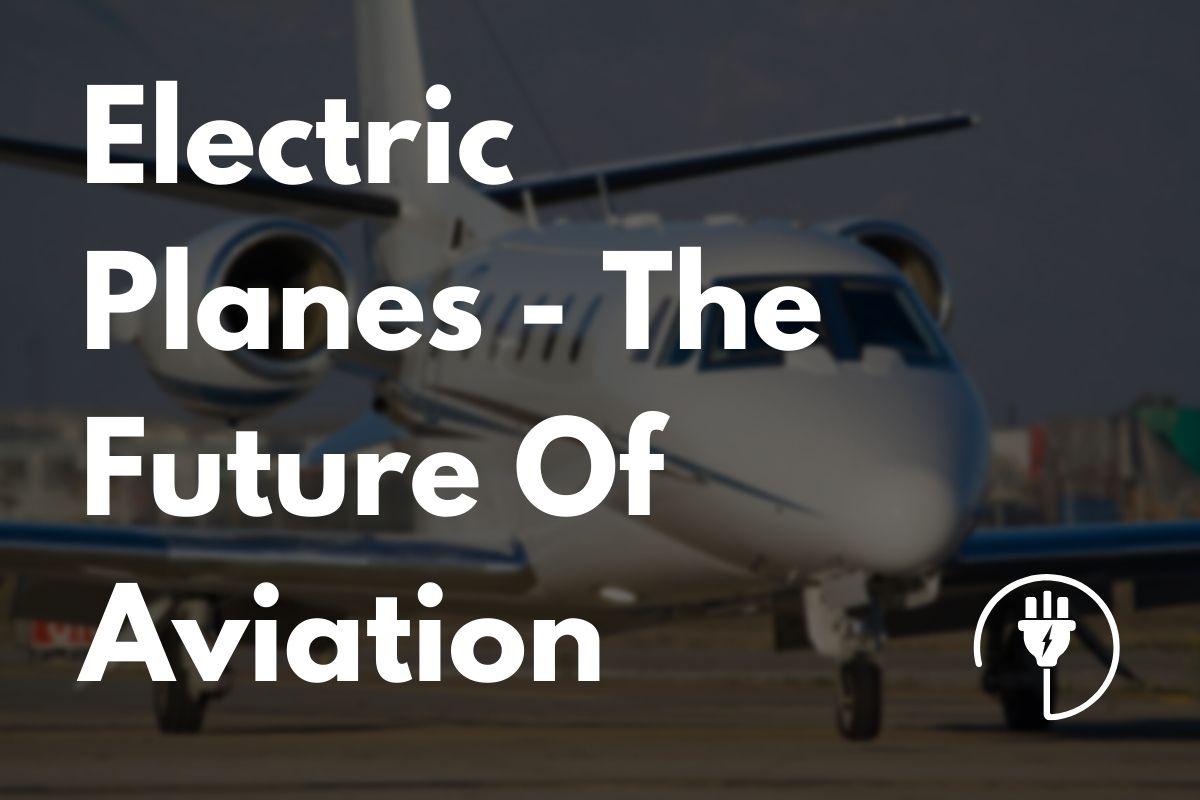Electric revolution is everywhere. Everything from cars to trucks to buses is going electric. And electric planes are just on the way to take off. Let's dive to explore the era of electric flight revolution.
Why Electric Planes?
The aviation and Shipping industry together accounts for 5% of worldwide CO2 emissions. According to ATAG international panel on climate 2020, Air travel produces 915 million tons of CO2 every year; Accounting for 2.5% of global emissions, and it continues to rise. International council on clean transportation estimates that (with the increasing number of traffic in aviation) CO2 emissions increased 33% between 2013 and 2019 on passenger aircraft.
The advent of electric aircraft is an important development in the aviation industry for many reasons. For starters, they are completely electric-powered, which means there is no consumption of fossil fuels which contributes to greenhouse gas emissions. Secondly, they are less costly to operate than their diesel counterparts. Lastly, they have a much lower noise footprint than traditional aircraft.
Early Struggle & Evolution of Electric Aircraft
In the early 1900s, humans discovered a new form of propulsion. Electricity. In the years that followed, many engineers attempted to create electric planes for commercial use. Unfortunately, most of these designs failed miserably and the idea of an electric plane was abandoned for decades.
In recent years, however, aviation experts have been revisiting the idea of an electric plane with a new attempt to create a battery-powered aircraft from scratch.
Since electric propulsion and battery technology becoming cheaper, quieter, and efficient, it has been suggested that the age of the gas-guzzling short-haul jet aircraft may soon come to an end. However, commercial airlines continue to be dependent on these fossil fuel-based aircraft for travel.
Market Leaders in Electric Flight Technology
The future of air travel seems to be electric. For years, manufacturers have been working on developing technology that allows for electric propulsion systems.
Eviation's dream is to lead the electric aviation market on regional routes. Alice, Eviation's all-electric commuter aircraft, the future of air travel may soon be taking off. Alice is designed to carry a payload of 2500 pounds (LBS). It can carry up to nine passengers. Alice has a max range of 440 NM (Nautical mile) with a max cruise speed of 250 KTS (Knots). Now Clermont Group owns Eviation Aircraft.
Pipistrel has been designing and manufacturing planes for more than 30 years while their first electric two-seater plane flew in 2007. Later on, this electric aircraft evolved as 'Alpha Electro' and owns the FAA - certification in the United States.
Alpha Electro can fly with a cruise speed of 200 km/h. This two-seated electric trainer aircraft weighs 279 kg and is made from composite materials.
A new form of electric propulsion, magniX, is being developed by Clermont Group. The recent unveiling of magniX's electrified aircraft propulsion system, which eliminates the need for jet fuel, may revolutionize the world of aviation. Magix has developed an electric motor that can be installed easily in small planes to take over conventional engines. This motor can be powered by a battery, eliminating the need for jet fuel.
The magni350 is a 350-kilowatt electric powerplant capable of producing 450 shaft horsepower, and the magni650 is designed as a 640-kW propulsion system equivalent to 850 shaft horsepower (shp).
Ampaire electric aircraft is one of the newest innovative models in aviation. These aircraft are built to be environmentally friendly, produce less noise pollution, and also provide a more enjoyable flying experience. The aircraft is powered by an emission-free electric motor that drives propellers. This design offers benefits such as quieter takeoff and landing, lower operating costs, and reduced air traffic congestion.
Bye Aerospace is an American aircraft manufacturer based in Englewood, Colorado. The company is specialized in designing and manufacturing electric aircraft.
Market Capacity & Final Words
MarketsandMarkets forecasts that:
"The global market for electric aircraft is estimated to be USD 7.9 billion in 2021 and is projected to reach USD 27.7 billion by 2030, at a CAGR of 14.8% during the forecast period."
We can say that the future of aviation is electric. Planes will fly with the same ease as cars, but with more environmental benefits. The transition to electric planes will be gradual, with small steps like adding hybrid engines, better batteries to existing models, deploying electric planes on short-haul and regional routes(Norway's plan for a fleet of electric planes), and electrifying aviation training aircraft.








